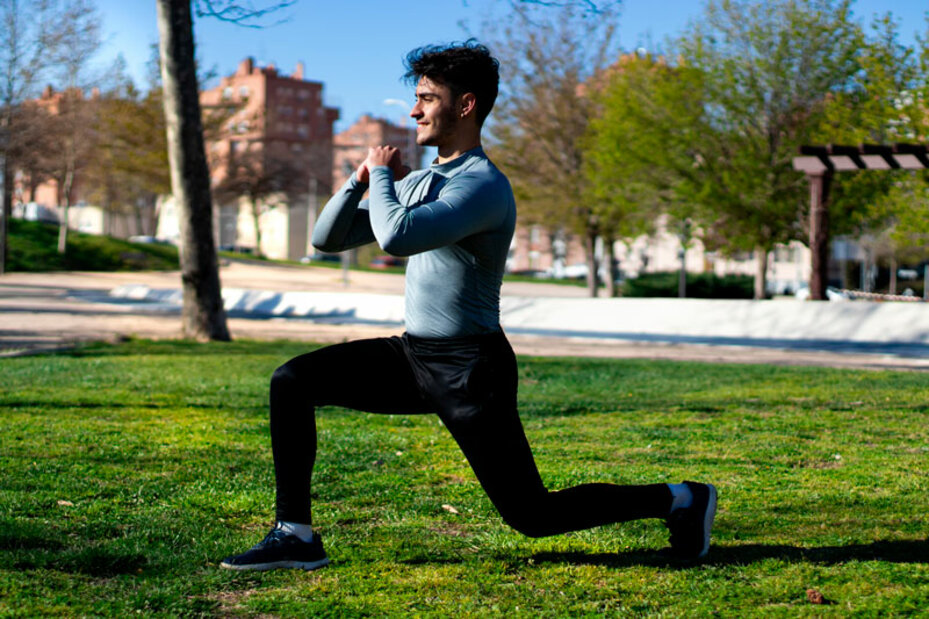No Oxygen? No Problem!
For an oxygen-dependent species such as humans, whoever would have thought that exercise without oxygen could be beneficial? Well, that’s exactly what anaerobic exercise is – any physical activity that consumes glucose without using oxygen in the process. And no, you don’t need to be underwater to perform these exercises! While keeping both feet on terra firma, there are several great benefits to anaerobic activities when living with type 1 diabetes. Already feeling a little light-headed at the thought? Keep reading to find out why “without-oxygen” exercises are actually good for your health.
Why Anaerobic Exercise is Good For You
During anaerobic training, your body is working at an intensity that means oxygen can’t be delivered to your muscles at a sufficient rate. Instead, your body relies on other sources of energy, such as consuming glycogen (a form of glucose) from your muscles. Anaerobic activities typically involve quick bursts of high-energy movements, like weightlifting or jumping.
Whether you live with type 1 diabetes or not, anaerobic training has several important benefits for your body:1
- Consumes calories.
- Boosts your heart health.
- Strengthens your muscles.
- Improves insulin sensitivity.
That last point sounds particularly appealing, doesn’t it? Currently, there are no studies specifically investigating the effectiveness of general anaerobic exercise on blood glucose management in type 1 diabetes. However, in studies involving people living with type 2 diabetes, anaerobic training was found to improve insulin sensitivity, aid blood glucose management, and reduce cardiovascular disease risk.2
If we focus on one type of anaerobic exercise in particular – strength and resistance training – we find another benefit of this specific exercise: increased bone mineral density. When living with type 1 diabetes, you may be at a higher risk of bone fractures due to low bone mineral density. Resistance exercises are great not only for strengthening your muscles but also your bones.3
An interesting aspect of anaerobic exercise is the effect it can have on blood glucose levels. We often think of physical exercise as causing a drop in blood glucose concentrations, leading to a hypoglycaemic event. However, research shows us that anaerobic training can in fact cause a rise in blood glucose levels.1,2 Does this mean you now need to be concerned about a hyperglycaemic event after pumping weights? Typically, no. The improved insulin sensitivity and increase in blood insulin concentration promoted by anaerobic training is usually enough to counter elevated blood glucose levels after exercise.1,2
3 Anaerobic Exercises To Get You Jumping and Pumping
Many forms of physical activity will incorporate both anaerobic and aerobic moments. If you think about a sport like basketball, there’ll be moments when you’re sprinting for the ball and then moments when you’re doing a light jog back to your end of the court.
If you’re feeling like oxygen is overrated and you want to get those muscles burning, here are some predominantly anaerobic exercises you can try.
1. High-intensity interval training (HIIT): this is a general term for any exercise that involves short periods of high-intensity work interspersed with lower intensity “rest” periods. If you have sufficient space, you can try HIIT with running – sprint for 90 seconds, jog for 20 seconds, then sprint for another 90. Keep this up for as long as you can!
2. Jump lunges and squats: as if lunges and squats weren’t tiring enough, up the intensity of these movements by including an explosive jump with each repetition. If you have free weights available, you can hold a dumbbell in each hand to really get those legs burning. This is a great exercise if you have limited space.
3. Weight lifting: you can do this with free weights or a weight machine. While keeping within safe limits, try to gradually push yourself to use heavier weights to switch on the anaerobic system. While using heavier weights you will probably be performing fewer repetitions, but this is okay.
Our fun video, Exercising with Maria, can also walk you through a simple workout incorporating star jumps as a form of anaerobic exercise.
Tips for Safe Jumping and Pumping
Before you bounce into anaerobic training, here are some things to consider helping keep you safe when living with type 1 diabetes:
- Monitor your blood glucose levels closely, before and after exercise.
- Discuss with your diabetes healthcare team about how to engage in anaerobic exercises safely. They may have some ideas to help manage any blood glucose rises by adjusting your pre-exercise insulin dosage or carbohydrate intake.2
- Although anaerobic exercise is associated with hyperglycaemia, it may also cause delayed hypoglycaemia,2 so be vigilant and prepared by following your usual hypo treatment (that has been recommended by your diabetes healthcare team).
Final Thoughts
If you’re ready to get pumping and jumping, your local gym or even sports or athletics club are some good places to start those muscles burning. Who needs oxygen anyway!
References
- American Diabetes Association. Anaerobic Exercise and Diabetes. https://www.diabetes.org/. 2020. Available at: https://www.diabetes.org/healthy-living/fitness/anaerobic-exercise-diabetes. (Accessed January 2022).
- Riddell M, Gallen I, Smart C, et al. Exercise management in type 1 diabetes: a consensus statement. Lancet Diab Endocrinol. 2017;5(5):377-390
- Colberg SR, Sigal RJ, Yardley JE, et al. Physical Activity/Exercise and Diabetes: A Position Statement of the American Diabetes Association. Diabetes Care. 2016;39(11):2065-2079.
